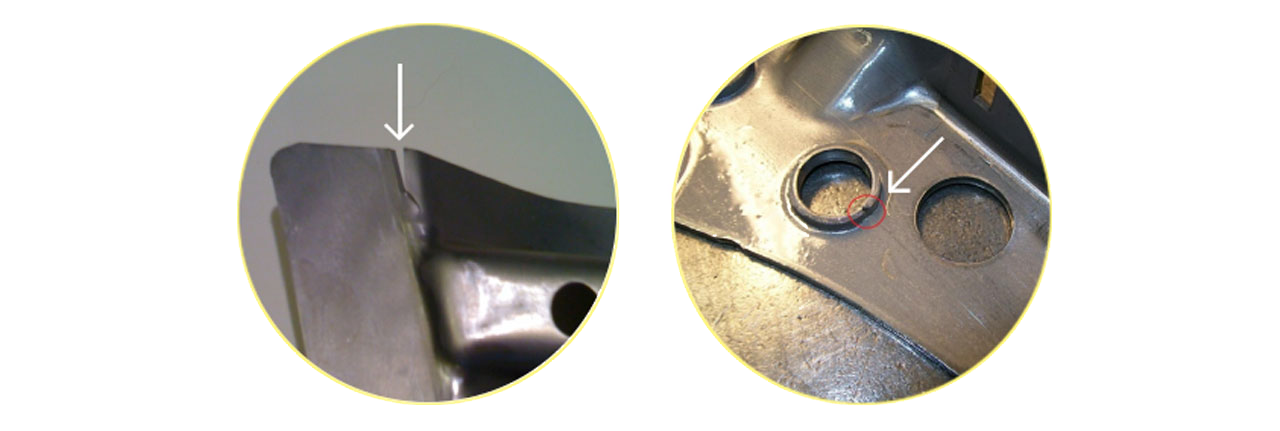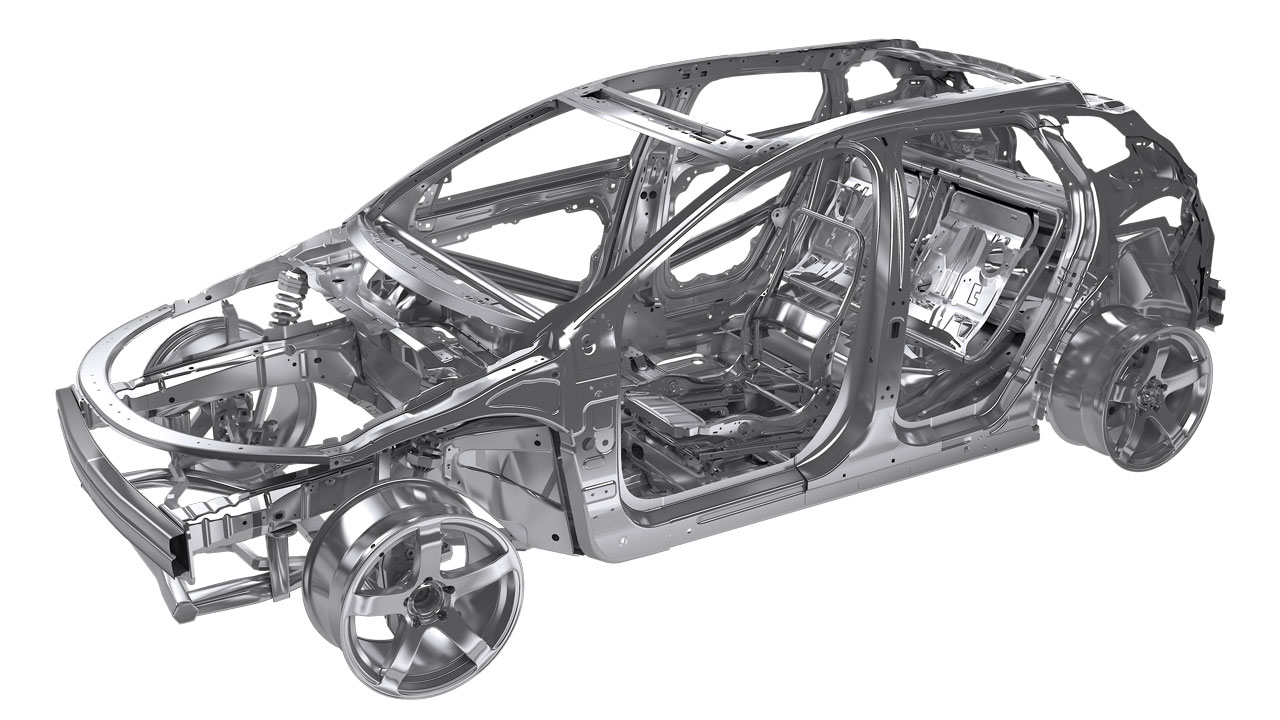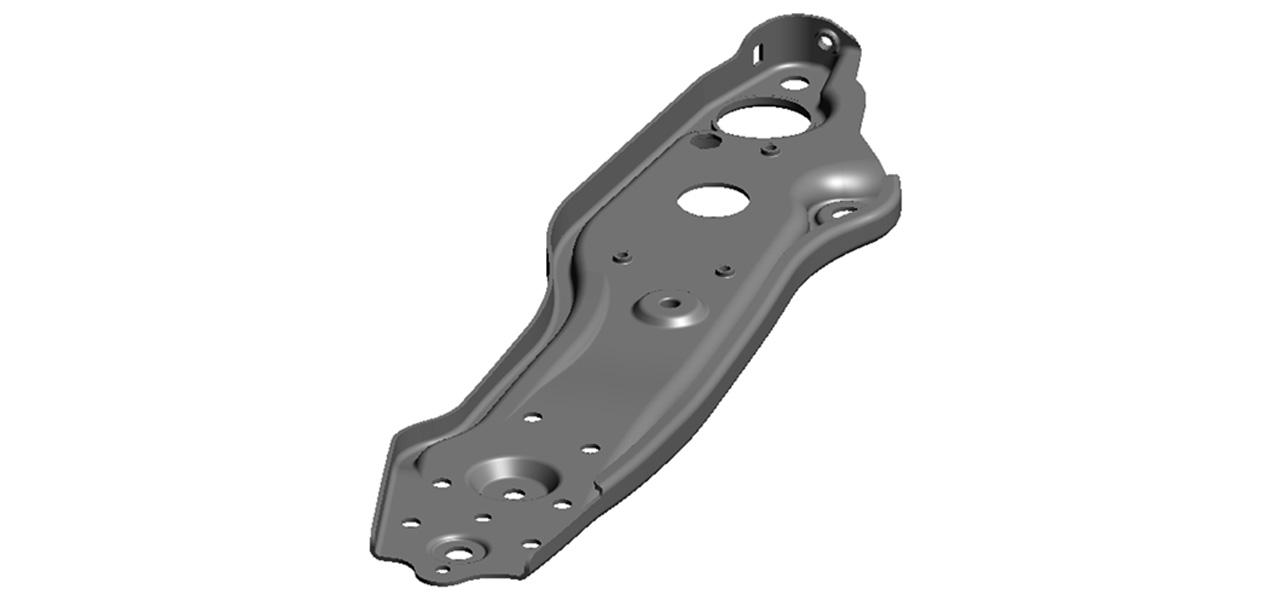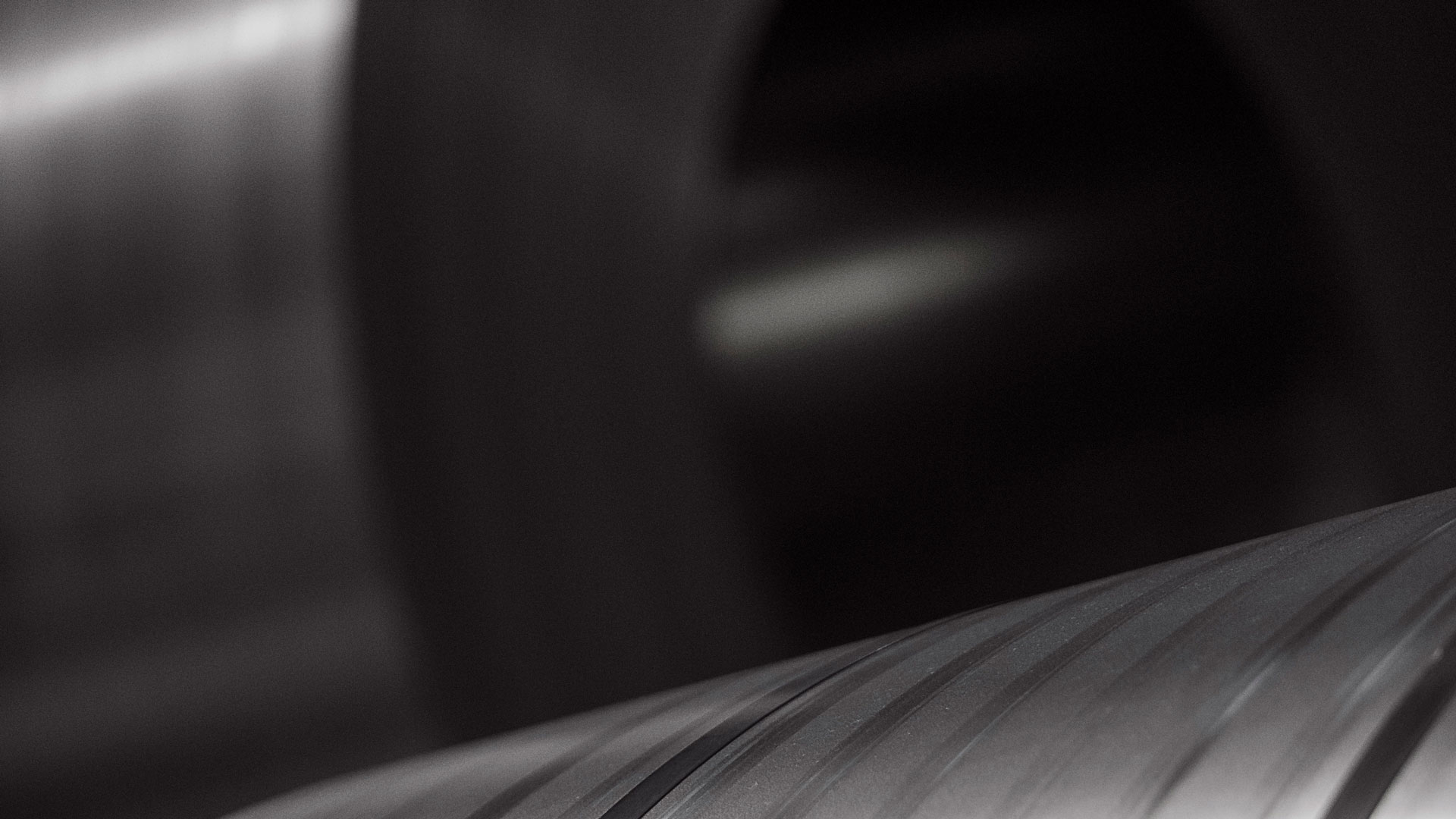High edge (HE) ductility HSLA steel
High edge ductility HSLA steel with greatly improved local formability and high hole expansion ratios – ideal for challenging auto components with complex designs on sheared stretched edges.
High edge ductility HSLA steel with greatly improved local formability and high hole expansion ratios – ideal for challenging auto components with complex designs on sheared stretched edges.
Unlike conventional HSLA steels, high edge ductility steels have a much finer microstructure and perlite distribution. This microstructure provides for higher formability, tighter radii bending, and crack-free sheared cuts – even on stretched edges. HE steel’s advanced microstructure is achieved by using exceptionally clean and closely controlled steelmaking processes. The high edge steel also has a low alloy content, making welding straightforward using conventional processes.

Left: Standard MC/LA grade. Right: HE grade HSLA.
An improvement of 30 percentage points in hole expansion ratio compared to conventional HSLA steels.

HE can help you solve part defects such as micro cracks on stretched punched holes and cracks on outer edges.
When a design needs higher edge ductility than provided by conventional HSLA grades, we recommend Docol HE.

Watch our customer test Docol high edge ductility HSLA by fineblanking a “cogwheel” pattern with teeth having a 0.3mm radii and 30° angles.
For best weight reduction, use higher grades with reduced thicknesses. All Docol HE grades are hot-rolled and meet EN10051 dimensional tolerances.
Looking for conventional automotive steels with tensile strengths from 550 MPa to 700 MPa in HSLA grades?
Excellent for fineblanking.
30% better hole expansion ratios than conventional HSLA.
Guaranteed bending radius of 0.0 xt.
Enables crack-free forming operations along multiple, complex sheared stretched edges.
Excellent for cold-forming of automotive components.
Low alloy composition allows conventional welding and resistance spot welding.
Reduced tool wear.
For specific forming guidance for your high edge ductility component, please contact our Technical Support.

Good fatigue properties.
Four grades: Docol 355HE, Docol 420HE, Docol 460HE, and Docol 500HE.
Global availability and support.
Docol 355HE, Docol 420HE, Docol 460HE, and Docol 500HE are made to SSAB specifications and can be dual certified with corresponding MC grades in EN 10149-2. In addition, we work closely with auto OEMs and Tier 1 suppliers to develop innovative, customized, high edge ductility steels for your specific components’ requirements.
Safety engineers: Design crash-related safety components with stretched punched edges that are free of micro-cracks and subsequent part failure.
Production engineers: Reduce micro cracks, burrs, and other defects on complex sheared stretched edges. Leverage the higher hole expansion ratios of Docol HE HSLA/AHSS steels in new, demanding part designs.
Lightweighting engineers: Achieve thinner and lighter parts by specifying SSAB’s new, higher strength Docol HE AHSS grades.
Procurement officers: Buy less materials, as you greatly reduce the number of defective components with cracked sheared edges.
Sustainability officers: Due to the extreme efficiency of our steelmaking processes, Docol HE steels made from virgin iron ore have the same CO2 footprint as recycled steels. And SSAB Fossil-Free Docol steels will be available in 2026.

With our Trial Material Stock Center, you can get AHSS samples for most of our commercially available steels – as well as samples for our newest but not yet commercially released grades. Unique to the industry, we ship coils, sheets and custom lengths of any size. In 1 to 2 weeks, your material is ready for dispatch to anywhere in the world.
Compared to conventional HSLA steels, high edge ductility steels have greatly improved local formability and high hole expansion ratios, helping you solve component defects like cracked outer edges and micro cracks on stretched punched holes.
High edge ductility steels are recommended as an alternative to corresponding HSLA grades when there is a need for improved edge ductility.
Subscribe to our free, monthly Automotive Insights newsletter and receive relevant, in-depth articles about the issues affecting your business and invitations to our webinars.